Indonesia has so many traditional cultures that becomes the most iconic things for Indonesian. The dances and unique death rituals in Indonesia are so iconic. These cultures become part of their tribe so that in other words for Indonesian they are means as their characteristic.
Like the other Indonesian regions, East Kalimantan has its traditional cultures such as traditional clothes, the iconic East Kalimantan orchid in Indonesia that exist there, foods as becomes the part of characteristics of Indonesian cuisine, houses, kinds of music, and dances. The tribe in East Kalimantan keep the traditional dances so that it wouldn’t be extinct.
Now, we have some traditional dances from East Kalimantan that you should know as the sacred dances in Idonesia. Let’s check them out!
1. Gantar Dance
Gantar dance is a kind of traditional dances from East Kalimantan that so popular in Indonesia. The dance comes originally from the West Kutai which commonly dances by the Dayak Benuaq and Dayak Tunjung tribes.
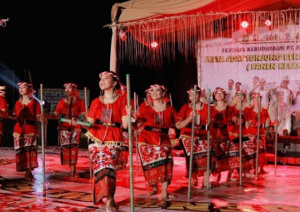
Gantar dance is an expression of happiness and kindness for East Kalimantan tribes to welcoming their guest. The dance used to use for harvest ritual and welcoming for Indonesian armies that just come back from the war.
2. Enggang Dance
The Enggang dance is commonly known by the name of the Enggang bird. The local tribe usually calls this dance as the Kancet Lasan dance which is so connected with the bird. The dance comes originally from the Dayak Kenyah tribes in the East Kalimantan.
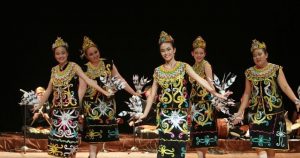
The Enggang dance is an expression of the worship of the Enggang bird. The local tribe believes that their greatest ancestor comes from the sky in the form of the Enggang bird. That is why commonly you will find this dance in most of important occasion.
3. Kancet Papatai
The Kancet Papatai dance is one of the traditional dances from the East Kalimantan which commonly dances by men. It originally comes from the Dayak Kenyah tribe which the figures for the war dances.
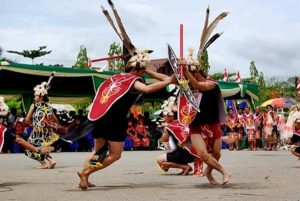
The Kancet Papatai dance is so popular in Indonesia as the expression of the men who go to war and their struggle to face their enemies. Even though the dance is about war, but every movement of the dancer comes not in a faster move but agile and expressive.
Since the war is over from a long time ago, the Kancet Papatai dance is now shown as the symbol of men’s power. The dance can be meant as the defense of every man while facing the world.
4. Kancet Ledo Dance
The Kancet Ledo dance commonly dancing by the Dayak Kenyah tribes in the East Kalimantan. If the Kancet Papatai dance pictures about the power of men, then the Kancet Ledo dance is the opposite of it.
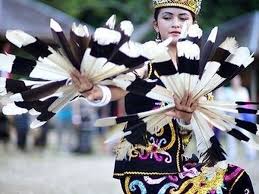
The Kancet Ledo dance is an expression of kindness, intelligence, cleverness, and beauty for women. The dance was followed by traditional music with Gong instruments. That is why people have commonly known this dance as the Gong dance.
The Kancet Ledo dance usually performs in some important meetings to welcoming guests. This dance even should be performed at the baby born ceremony when the chief having a baby born from his wife.
5. Datun Julud Dance
The Datun Jalud dance is one of the traditional dances from the East Kalimantan which is commonly danced by the Dayak Kenyah tribes. This dance becomes so important for the Dayak Kenyah tribe so that you can see it at most of Dayak Kenyah’s custom rituals.
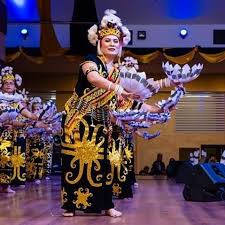
Commonly the Datun Julud dance should be performing at the Panjang house with the chief there. The local tribe knew the dance as the Kancet Datun Julud which means as a big celebration to welcoming their important guest.
6. Hudoq Dance
Hudoq dance is one of the traditional dances that commonly danced by the Hudoq tribes as the sub-tribes of Dayak in the East Kalimantan. This dance commonly dances as the expression or the happiness from their great harvest.
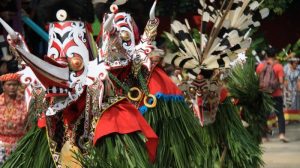
Hudoq dance has a unique meaning as the word for manipulating something. As for the harvest, the local tribes manipulate themselves to become a bird to warn some pest that destroys their harvest.
Belong to the local tradition in the Dayak tribe, the Hudoq dance performing right after the harvest was done. They will dance from one village to another which commonly happens between September and October. The dance should be followed by the shaman as their guide to dancing.
7. Ngerangkau Dance
The Ngerangkau dance is one of the most sacred of traditional dances from the East Kalimantan which commonly plays by Dayak Benua and Tunjung tribes. This holiest dance becomes the symbol of the sacredness to invite their greatest ancestor to dance together.
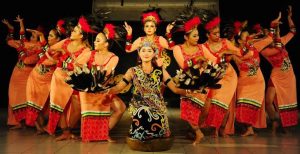
Commonly when the tribe celebrating a big party, the Ngerangkau dance will be held to invite their ancestors. They believe that their happiness should be shared with their ancestor even though they were passed away for a long time.
The dances should be followed by the shaman so that he will read the spell. After that, if the shaman will tell the story about their ancestors once they were alive one by one.
8. Kutai Offerings Dance
The Kutai offerings dance is the assimilation of the local East Kalimantan tribes with Melayunese. Even though the dance comes from the Melayunese but, the Javanese tribe gives the most influence in this dance.

At the Kutai offerings dance, the dancer will bring the yellow rice as one of the Indonesian staple food that they should spread them into their guest. This means as the sign for respecting and welcoming their guest.
As one of the 5 largest islands in Indonesia, Kalimantan has its iconic cultures in the East Kalimantan with its traditional dances. So, there are eight traditional dances from East Kalimantan that you should know. Most of them become the most sacred dance in Indonesia that we should preserve them to avoid the extinct.
